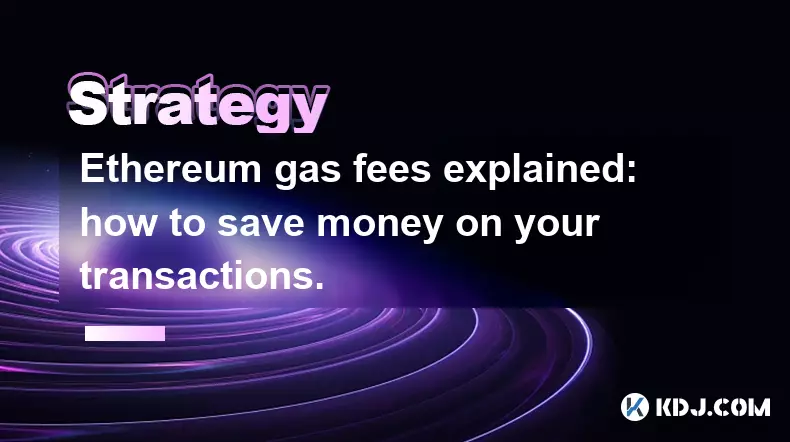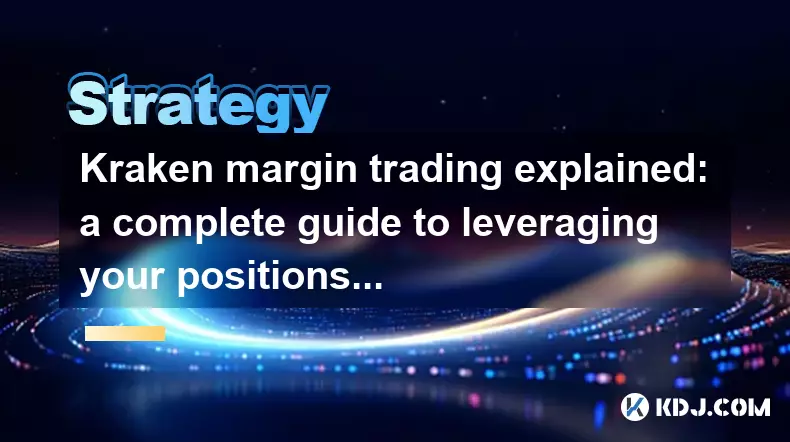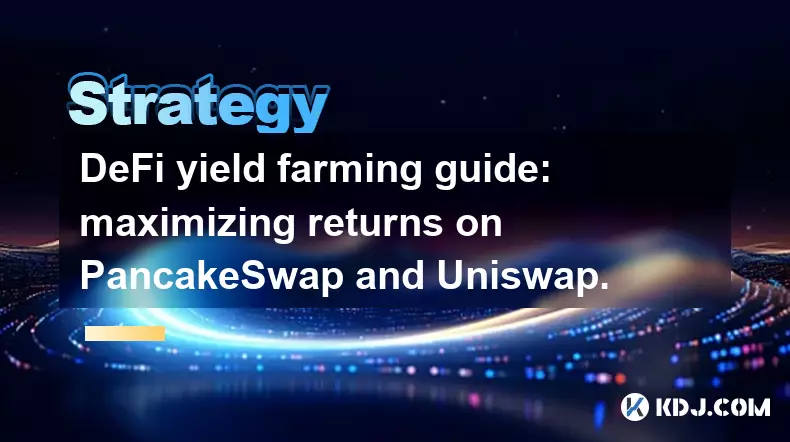-
 bitcoin
bitcoin $101752.865364 USD
-1.09% -
 ethereum
ethereum $3382.985899 USD
-1.38% -
 tether
tether $0.999658 USD
0.04% -
 xrp
xrp $2.272505 USD
-1.51% -
 bnb
bnb $989.089004 USD
0.14% -
 solana
solana $156.962612 USD
-3.08% -
 usd-coin
usd-coin $0.999776 USD
0.01% -
 tron
tron $0.290786 USD
-0.69% -
 dogecoin
dogecoin $0.174594 USD
-2.86% -
 cardano
cardano $0.560085 USD
-3.55% -
 hyperliquid
hyperliquid $40.023704 USD
-5.75% -
 chainlink
chainlink $15.324649 USD
-2.78% -
 bitcoin-cash
bitcoin-cash $493.576540 USD
-3.52% -
 zcash
zcash $571.320038 USD
-12.05% -
 stellar
stellar $0.280066 USD
-4.26%
Ethereum gas fees explained: how to save money on your transactions.
Ethereum gas fees vary based on network demand, transaction complexity, and user-set gas prices, with tools and Layer 2 solutions helping reduce costs.
Nov 04, 2025 at 04:01 pm

Ethereum Gas Fees: Understanding the Basics
1. Ethereum operates on a decentralized network where every transaction requires computational power to execute. This computation is measured in units called gas. Each operation, whether it’s transferring ETH or interacting with a smart contract, consumes a specific amount of gas based on its complexity.
2. The gas fee is the cost paid by users to compensate miners or validators for processing transactions. It consists of two components: the gas limit, which is the maximum amount of gas a user is willing to spend, and the gas price, denominated in gwei (a fraction of ETH), which reflects how much the user pays per unit of gas.
3. During periods of high network congestion, demand for block space increases. This drives up gas prices as users compete to have their transactions included in the next block. Transactions with higher gas prices are prioritized by miners, leading to faster confirmations but at a higher cost.
4. Understanding the relationship between gas price and transaction speed is essential for managing costs effectively. Users can save money by choosing lower gas prices when urgency is not a factor.
5. Tools like Etherscan’s gas tracker or Blocknative’s Gas Platform provide real-time data on current gas prices, helping users time their transactions during low-activity periods such as late-night hours in major time zones.
Strategies to Reduce Ethereum Transaction Costs
1. Monitoring network activity allows users to schedule non-urgent transactions during off-peak times. Typically, weekends and early mornings UTC see reduced traffic, resulting in significantly lower gas fees.
2. Setting a custom gas limit prevents overpayment. Some wallets automatically suggest high limits to ensure execution, but manually adjusting them closer to the actual required gas can reduce wasted funds, especially for simple transfers.
3. Utilizing Layer 2 solutions such as Arbitrum, Optimism, or zkSync enables users to conduct transactions off the main Ethereum chain, drastically reducing fees while maintaining security through Ethereum’s consensus layer.
4. Wallets like MetaMask allow users to edit gas fees before confirming a transaction. By selecting the “slow” option or inputting a custom gas price below the recommended rate, users can cut costs, though this may delay confirmation times.
5. Batch operations, such as combining multiple token swaps or NFT mints into a single transaction via smart contract functions, minimize the number of on-chain interactions and thus reduce total gas expenditure.
The Role of EIP-1559 in Gas Fee Management
1. Introduced in the London hard fork, EIP-1559 reformed Ethereum’s fee market by replacing the auction-based model with a base fee that adjusts dynamically based on block congestion. This base fee is burned, making it predictable and reducing volatility.
2. Users now pay the base fee plus a priority fee (tip) to validators. The tip incentivizes faster inclusion and is particularly useful during peak usage. Because the base fee changes gradually, users can anticipate fee levels more accurately.
3. Refunds for unused gas were already part of Ethereum’s design, but EIP-1559 enhanced transparency by clearly separating the burn from the tip, giving users better insight into where their funds go.
4. When blocks are under half full, the base fee decreases, encouraging more transactions at lower costs. Conversely, when blocks are full, the fee rises, discouraging spam and regulating demand organically.
5. Applications built on Ethereum can now offer more accurate fee estimates, improving user experience and reducing overpayment due to unclear pricing structures.
Frequently Asked Questions
What causes Ethereum gas fees to spike suddenly?Sudden spikes occur when there is a surge in network usage, often triggered by popular NFT minting events, decentralized exchange launches, or large-scale DeFi interactions. These events flood the mempool with pending transactions, forcing users to increase their gas prices to stay competitive.
Can I get a refund if my Ethereum transaction fails?Yes, if a transaction fails due to an error in execution, the gas used for computation is still consumed, but any ETH sent beyond the gas cost is returned. However, the gas fee itself is not refunded because resources were spent validating the failed transaction.
Are there alternatives to paying high gas fees on Ethereum?Yes, users can leverage sidechains like Polygon or Layer 2 networks such as Arbitrum and Optimism. These platforms offer Ethereum-compatible environments with lower fees by settling finality on the main chain without executing every transaction directly on it.
How do wallet apps estimate gas fees?Wallets pull data from public gas APIs that analyze recent block conditions, current mempool congestion, and historical trends. They then suggest low, medium, and high fee options corresponding to estimated confirmation times, allowing users to balance cost and speed.
Disclaimer:info@kdj.com
The information provided is not trading advice. kdj.com does not assume any responsibility for any investments made based on the information provided in this article. Cryptocurrencies are highly volatile and it is highly recommended that you invest with caution after thorough research!
If you believe that the content used on this website infringes your copyright, please contact us immediately (info@kdj.com) and we will delete it promptly.
- Ripple (XRP) in 2026: Hold or Fold? A Look at XRP's Future and Emerging DeFi Alternatives
- 2025-11-08 18:35:01
- Zcash ZEC Coin Price Explosion: From Privacy Niche to Center Stage
- 2025-11-08 18:55:01
- Berachain Price Prediction: Navigating the Honeycomb Hype in Crypto
- 2025-11-08 18:55:01
- Arthur Hayes, Gold, and Bitcoin: A Modern Monetary Trinity?
- 2025-11-08 19:15:01
- Shiba Inu's Next Move: Navigating a Shifting Market
- 2025-11-08 19:20:01
- Pakistan's Crypto Crossroads: Balancing Opportunity with Asset-Backed Realities
- 2025-11-08 19:20:01
Related knowledge

Navigating a crypto bear market: strategies for survival and profit.
Nov 05,2025 at 02:04pm
Navigating a Crypto Bear Market: Strategies for Survival and Profit Surviving a crypto bear market requires more than just patience—it demands strateg...

Ethereum gas fees explained: how to save money on your transactions.
Nov 04,2025 at 04:01pm
Ethereum Gas Fees: Understanding the Basics1. Ethereum operates on a decentralized network where every transaction requires computational power to exe...

Kraken margin trading explained: a complete guide to leveraging your positions.
Nov 04,2025 at 02:19pm
Kraken Margin Trading Overview1. Kraken is one of the most established cryptocurrency exchanges offering margin trading to experienced traders seeking...

NFT flipping for beginners: a step-by-step guide to profitable trading.
Nov 02,2025 at 11:54pm
NFT Flipping Basics: Understanding the Market1. NFT flipping involves purchasing non-fungible tokens at a lower price and reselling them for profit, o...

DeFi yield farming guide: maximizing returns on PancakeSwap and Uniswap.
Nov 05,2025 at 12:20am
Understanding Yield Farming on PancakeSwap and Uniswap1. Yield farming has become a central activity in the decentralized finance (DeFi) space, allowi...

How to find the next 100x altcoin: a fundamental analysis checklist.
Nov 02,2025 at 09:54pm
Decentralized Exchanges Are Reshaping Trading Dynamics1. Decentralized exchanges (DEXs) have emerged as a powerful alternative to centralized platform...

Navigating a crypto bear market: strategies for survival and profit.
Nov 05,2025 at 02:04pm
Navigating a Crypto Bear Market: Strategies for Survival and Profit Surviving a crypto bear market requires more than just patience—it demands strateg...

Ethereum gas fees explained: how to save money on your transactions.
Nov 04,2025 at 04:01pm
Ethereum Gas Fees: Understanding the Basics1. Ethereum operates on a decentralized network where every transaction requires computational power to exe...

Kraken margin trading explained: a complete guide to leveraging your positions.
Nov 04,2025 at 02:19pm
Kraken Margin Trading Overview1. Kraken is one of the most established cryptocurrency exchanges offering margin trading to experienced traders seeking...

NFT flipping for beginners: a step-by-step guide to profitable trading.
Nov 02,2025 at 11:54pm
NFT Flipping Basics: Understanding the Market1. NFT flipping involves purchasing non-fungible tokens at a lower price and reselling them for profit, o...

DeFi yield farming guide: maximizing returns on PancakeSwap and Uniswap.
Nov 05,2025 at 12:20am
Understanding Yield Farming on PancakeSwap and Uniswap1. Yield farming has become a central activity in the decentralized finance (DeFi) space, allowi...

How to find the next 100x altcoin: a fundamental analysis checklist.
Nov 02,2025 at 09:54pm
Decentralized Exchanges Are Reshaping Trading Dynamics1. Decentralized exchanges (DEXs) have emerged as a powerful alternative to centralized platform...
See all articles





















![The Graph Price Prediction [GRT Crypto Price News Today] The Graph Price Prediction [GRT Crypto Price News Today]](/uploads/2025/11/07/cryptocurrencies-news/videos/690d4df44fe69_image_500_375.webp)



















































